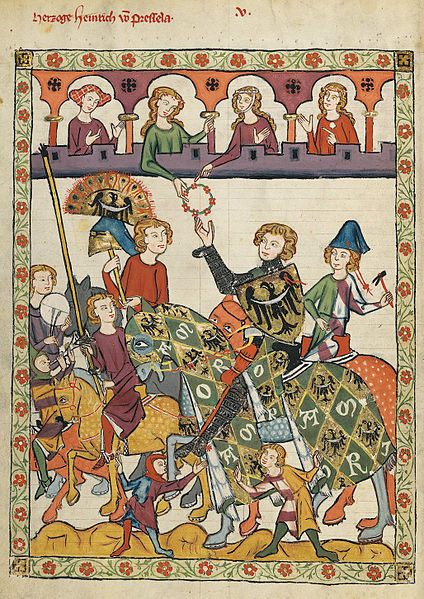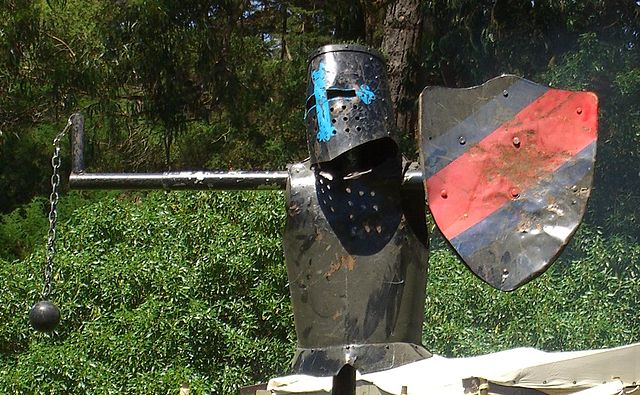Hastilude is a generic term used in the Middle Ages to refer to many kinds of martial games. The word comes from the Latin hastiludium, literally "lance game". By the 14th century, the term usually excluded tournaments and was used to describe the other games collectively; this seems to have coincided with the increasing preference for ritualistic and individualistic games over the traditional mêlée style.
A knight receiving a lady's favour at a hastilude. From Codex Manesse.
Quintain at the Golden Gate Renaissance Festival 2005
A tournament, or tourney, was a chivalrous competition or mock fight in the Middle Ages and Renaissance, and is a type of hastilude. Tournaments included mêlée, hand-to-hand combat, contests of strength, accuracy, and sometimes jousts. Although some thought that the tournaments were a threat to public order, the shows were still often held to celebrate coronations, marriages of notable figures, births, recent conquests, peace treatises; to welcome those considered of great importance, such as ambassadors and lords; or for no particular reason at all, and simply for entertainment. Certain tournaments are depicted throughout the Codex Manesse.
An early 14th century depiction of mounted combat in a tournament from the German Codex Manesse.
Two teams stand ready just before the match begins; each side has 24 knights, each with a banner-bearer. There is a central spectators' box for the four judges, and one on each side for the ladies; inscribed over the boxes is plus est en vous which is the motto of the Gruuthuse family of Bruges.
A tournament in progress (René d'Anjou), only the banners of Bourbon and Brittany are shown left in the field of view. The individual knights' banners are seen to the right.
The joust outlasted the tournament proper and was widely practiced well into the 16th century (sketch by Jörg Breu the Elder, 1510).






